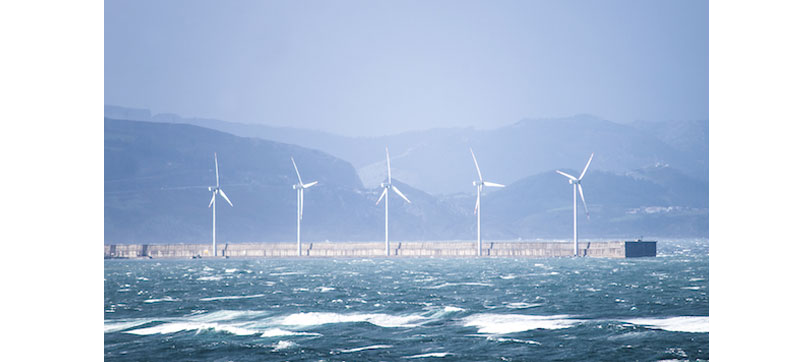It’s Time for Our Blue Energy Future
The fossil fuel era is over. It’s time to look toward ocean energy: wind, hydropower, salinity gradient power, and further inventive blue energy technologies newly and not yet discovered to get on toward our clean energy future.

Never have we needed more alternative energy than we do today. It has become finally clear that the harvest and burning of fossil fuels has cause massive damage to land, air, sea and global health and that continued reliance on the cause to meet the crisis of the effect is suicidal. The financial markets, major investors, some governments, some of the big energy companies, and even some of the producing nations almost totally reliant on oil revenues, have realized that the fossil fuel era, for all its positives, is now over, done, and we need get on to our future.
The ocean will play an enormous part. We know the value of offshore wind, and finally, despite opposition by industry and some environmentalists, wind energy will be a significant source for power. Scandinavian and other European countries are well advanced. In the United States, permit applications for offshore wind in the areas of five north Atlantic states: New York, Connecticut, Rhode Island, Massachusetts, and New Hampshire exceed in projected production volume the generation of more than 20 modern nuclear power plants. In Maine, the potential exceeds the total of those five states combined. After vested interest and political opposition, Maine’s new governor Janet Mills has raised offshore wind generation to a primary premise on which the state’s future is to be based.
There are also other technologies — hydropower is well established, various projects for wave energy, tidal, and current generation underway, and renewed interest in geothermal energy linked to coast-based desalination plants. We have discussed all these in numerous editions of our World Ocean Radio podcast, and finally it seems that what were outlier, even radical, suggestions over time, now approach conventional wisdom. All good.
But not yet good enough. We are going to need further invention, capital investment, and new application of energy technology to augment, even replace and render those methods described as interim. One such is based on salinity gradient power, the concept of energy generated by exchange of ions between freshwater and saltwater through membranes, with resultant heat or pressure build-up applied to drive turbines for electricity generation. In a recent article, Tim Smedley, a British journalist who writes most interestingly about climate issues and solutions, describes projects for this technology previously constructed in Sicily and Norway; both lapsed as difficult to scale and cost ineffective. But the Norwegian prototype has been revived, as a new pilot in Denmark, using much more efficient membranes, with an upscale potential of 1 Megawatt generation by 2022 — and a project similar to Sicily has opened in the Netherlands at the Afsluitdijk dam with freshwater on one side, saltwater on the other, now generating up to 50 kilowatts of power. Smedley also cites a study by Wageningen University in the Netherlands, identifying some 123 rivers worldwide that “have the technical potential for blue energy power generation exceeding 1 gigawatt to include the Zaire, Orinoco, Ganges, Niles, Mississippi, St. Lawrence, Parana, Zambezi, and Mekong rivers.”
The coast as a locus for innovation: the energy edge! 
An article published by the Electrochemical Society also discusses the further potential of blue energy, what it calls osmotic power, a process that if harnessed, Dr. Andrew Herring of the Colorado School of Mines, a Society advisor, describes as “free energy.” As an example of such innovation, the Society also cites the work of Taek Dong Chung, a professor at the Korean National University in Seoul, who envisions the technology applied to salt-water powered computers, accelerated patch-based drug delivery, and water-splitting applications, the salt-water gradient powering semi-conductors to separate hydrogen and oxygen as a new source of energy transfer and delivery. The Society article concludes “Blue Energy is just the tip of the iceberg when it comes to the energy/water nexus. In other areas of the field, researchers are working on developing membranes for more efficient water treatment, creating electrochemical devices to recycle dangerous fertilizer run-off to prevent algae blooms, processing urine to produce clean water with hydrogen as a by-product, and much more.”
So there you have it, the ocean, from wind to waste, serving our future.

PETER NEILL is founder and director of the World Ocean Observatory and is author of The Once and Future Ocean: Notes Toward a New Hydraulic Society. He is also the host of World Ocean Radio upon which this blog is inspired.
- Login to post comments
-


